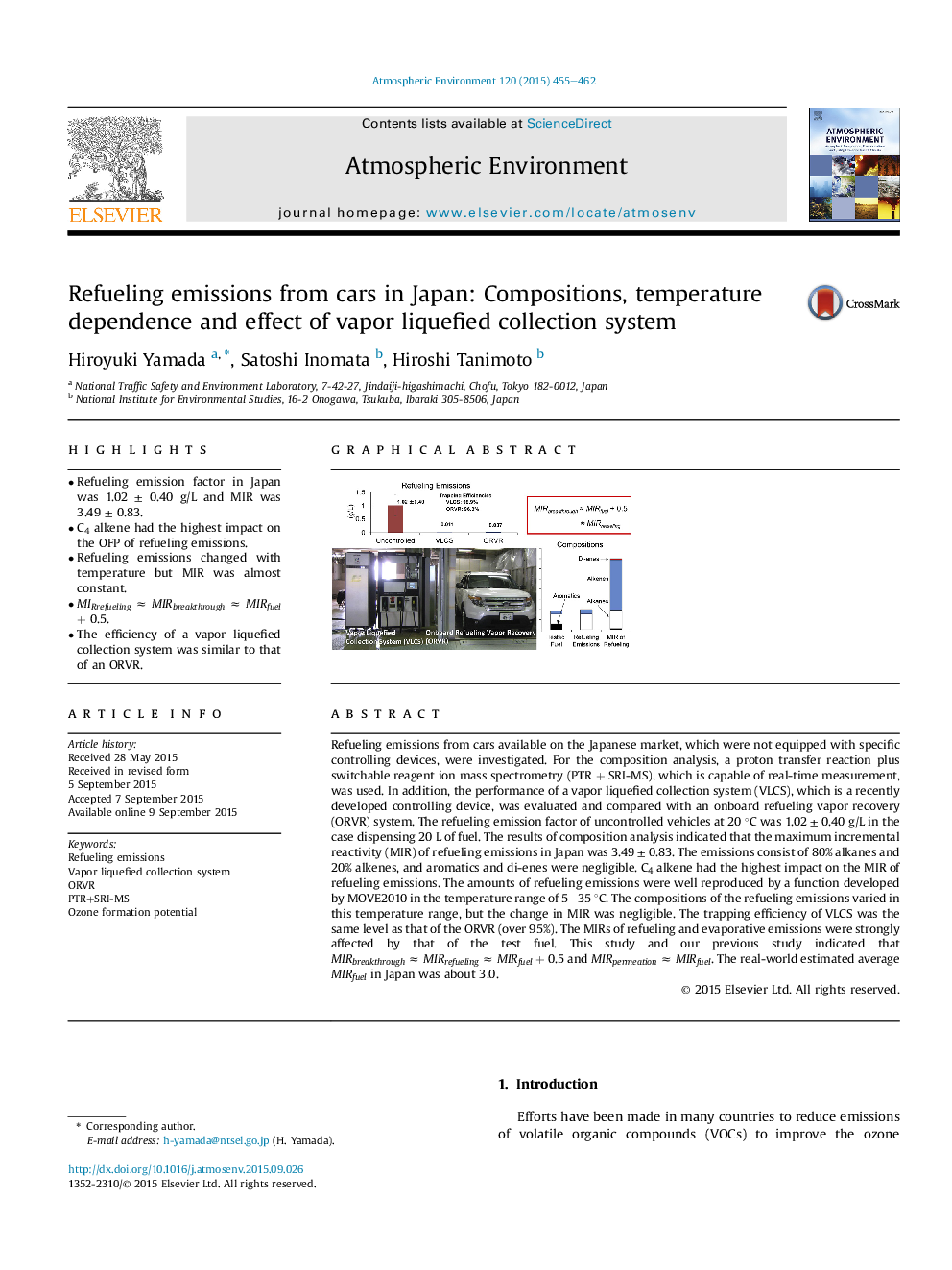| کد مقاله | کد نشریه | سال انتشار | مقاله انگلیسی | نسخه تمام متن |
|---|---|---|---|---|
| 6337397 | 1620351 | 2015 | 8 صفحه PDF | دانلود رایگان |
- Refueling emission factor in Japan was 1.02 ± 0.40 g/L and MIR was 3.49 ± 0.83.
- C4 alkene had the highest impact on the OFP of refueling emissions.
- Refueling emissions changed with temperature but MIR was almost constant.
- MIRrefueling â MIRbreakthrough â MIRfuel + 0.5.
- The efficiency of a vapor liquefied collection system was similar to that of an ORVR.
Refueling emissions from cars available on the Japanese market, which were not equipped with specific controlling devices, were investigated. For the composition analysis, a proton transfer reaction plus switchable reagent ion mass spectrometry (PTR + SRI-MS), which is capable of real-time measurement, was used. In addition, the performance of a vapor liquefied collection system (VLCS), which is a recently developed controlling device, was evaluated and compared with an onboard refueling vapor recovery (ORVR) system. The refueling emission factor of uncontrolled vehicles at 20 °C was 1.02 ± 0.40 g/L in the case dispensing 20 L of fuel. The results of composition analysis indicated that the maximum incremental reactivity (MIR) of refueling emissions in Japan was 3.49 ± 0.83. The emissions consist of 80% alkanes and 20% alkenes, and aromatics and di-enes were negligible. C4 alkene had the highest impact on the MIR of refueling emissions. The amounts of refueling emissions were well reproduced by a function developed by MOVE2010 in the temperature range of 5-35 °C. The compositions of the refueling emissions varied in this temperature range, but the change in MIR was negligible. The trapping efficiency of VLCS was the same level as that of the ORVR (over 95%). The MIRs of refueling and evaporative emissions were strongly affected by that of the test fuel. This study and our previous study indicated that MIRbreakthrough â MIRrefueling â MIRfuel + 0.5 and MIRpermeation â MIRfuel. The real-world estimated average MIRfuel in Japan was about 3.0.
300
Journal: Atmospheric Environment - Volume 120, November 2015, Pages 455-462
